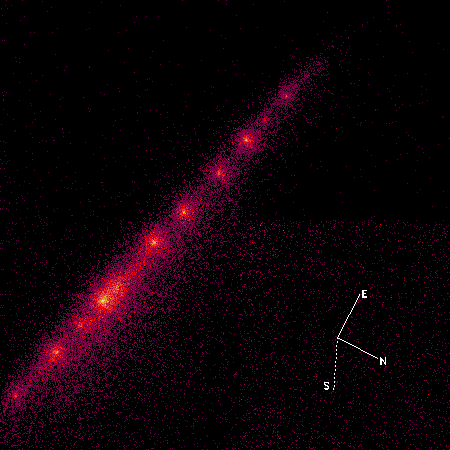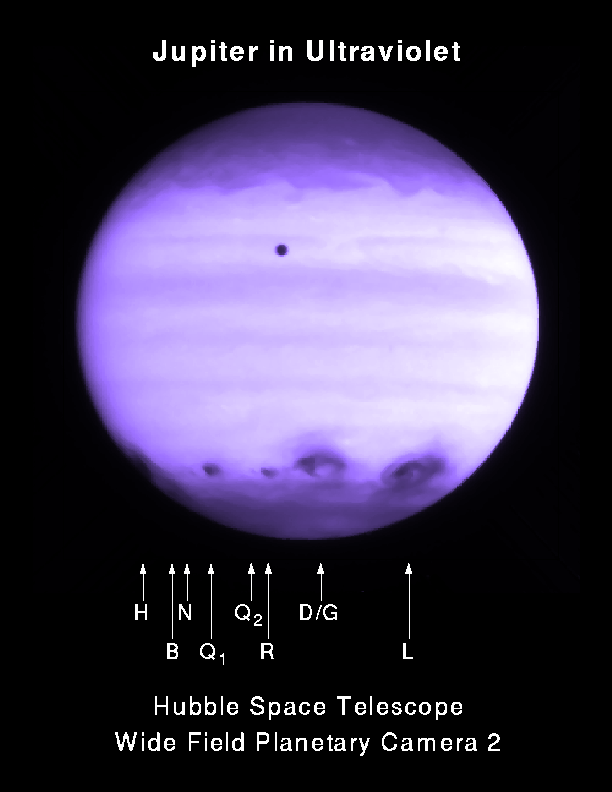 Comet Ikeya_Seki in 1966.
Comet Ikeya_Seki in 1966.
Credit: Roger Lynds/NOAO/AURA/NSF.
 Comet Shoemaker-Levy 9 after it had fragmented. HST, 1993jul01.
Comet Shoemaker-Levy 9 after it had fragmented. HST, 1993jul01.
This HST image shows approximately 20 fragments.
Comet Shoemaker-Levy 9 was gravitationally captured by Jupiter sometime in the past (Se-501--503).
In 1992 it went too close to Jupiter and was broken up into at least 21 fragments by Jupiter's tidal force.
The size scale of the fragments is about 5 km.
It was discovered at about this time by Eugene and Carolyn Shoemaker and David Levy.
The fragments formed a long chain on an elliptical orbit that looped away from Jupiter and than returned so close to Jupiter that the fragments impacted over a period of 6 days in 1994jul.
Unfortunately, all the impacts happened on the far side from the Earth and so were unobserved.
But the impact sites were rotated into view quickly and were impressively obvious. Recall Jupiter's rotational period is 9 hr, 50 min, 30 sec.
At the time---as yours truly recalled---people wondered if the impactors would splash down without a trace.
Credit: STScI/NASA/H. A. Weaver/T. E. Smith; download site Views of the Solar System: Comets by Calvin J. Hamilton.
 Comet Shoemaker-Levy 9 impacts on Jupiter in UV. HST, 1994jul21.
Comet Shoemaker-Levy 9 impacts on Jupiter in UV. HST, 1994jul21.
This is an ultraviolet image of Jupiter: wavelength 255 nm. The color, of course, is false.
Impact site H is just rising on the dawn limb of Jupiter. The impact happened only about 15 minutes earlier.
Impact site R is about 2.5 hours after impact.
The impact sites look dark because dust deposited by the breaking up fragments. The dust is not very reflective.
Remember that the Jupiter diameter is about 11.2 Earth diameters. Some sites are bigger than the Earth.
Thus the impact-affected regions are huge and the impactors were only about 5 km in size scale.
Each impactor's kinetic energy was equivalent to a few million megatons TNT.
This energy was transformed into explosion energy.
Fireballs rose to about 3000 km and in the infrared there were glowing hot scars.
See the discussion of Se-501--503
Credit: NASA/Hubble Space Telescope Comet Team; download site Views of the Solar System: Comets by Calvin J. Hamilton.